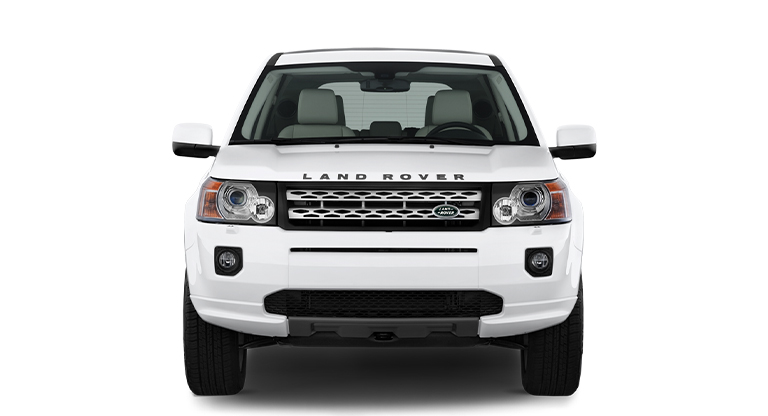- September 10,2024
The Evolution of Land Rover Engines: A Historical Journey Through Power and Performance
A Land Rover makes a statement for people who live on the edge. The brand has been known for its durability and off-road capabilities since its inception in 1948. As built to overcome the most severe environments, Land Rover vehicles have been characterized by reliability, strength, and versatility. The Land Rover Engine has been one of the most important aspects of the world-famous cars. From the start, the company was oriented towards performance, thus drivers were free to go through the deserts, jungles, and mountains without any trouble. Over the years, Land Rover has grown to be the most favourite choice of numerous off-roaders, adventurers, and those who need a car that would do more than drive on paved roads. The brand has achieved something of a status as a global icon due to its risk-taking in the engineering of off-road vehicles.
When we look into the future, it is an innovation that will define Land Rover as the car maker of choice. At the moment, the brand is fusing the old power with new technologies to fulfil the demands of today’s drivers. Land Rover has thus far taken the lead in hybrid and electric engines and AI-driven systems among others. Through the combination of sustainability and high performance, the brand is now more than ever ready for the future of mobility. On the other hand, efficiency and power continue to be the focus. This equilibrium between the old and new enables Land Rovers to ride the wave of change in the automotive industry.
The Importance of Engine Performance in Off-Road Vehicles
Just like with off-road vehicles, the engine’s performance plays a vital role in this. An engine’s torque and power are the aspects that dictate whether or not it will be able to go through steep inclines, muddy pits, or rocky trails. In off-road situations, an engine should produce a steady performance, allowing the vehicle to pass through risky obstacles. This is the circumstance when the output of the power, the fuel efficiency, and the mechanical reliability should be balanced. Since Land Rover has always focused on the engines, they have been able to supply the required force to conquer the most difficult terrains. It should be the right engine that makes the difference whether in the deserts of Africa or in the snowy peaks of the Himalayas.
Early Engines: The Powerhouse of the Series I
The first Land Rover models came with engines that set the stage for years of progress. The Series I started in 1948 was the first of its kind. Land Rover engineers had to look for a dependable and durable motor that met the requirements of difficult driving conditions. These first engines had very few parts but were still strong. Their purpose was to be multifunctional and used for farming, military applications, and off-road driving. People’s trustworthiness is what made them Land Rover’s trusted brand around the world.
The 1.5-litre Petrol Engine
The first engine used in the Series I was a 1.5-litre petrol engine. This small but sturdy engine was taken from the Rover P3 saloon car. With an output of around 50 horsepower, it wasn’t particularly powerful by today’s standards. However, it was designed to be dependable and efficient, ideal for the needs of early Land Rover users. Farmers and military personnel needed a vehicle that could handle rough terrain without breaking down. This 1.5-litre engine did just that. Its simplicity made it easy to maintain, and its ruggedness made it perfect for off-road tasks.
The 2.0-litre Diesel Engine
As demand for more powerful engines grew, Land Rover introduced the 2.0-litre diesel engine. This engine was developed to meet the needs of drivers who required more torque for towing and heavy-duty tasks. Although not as powerful as some petrol engines, it provides better fuel economy, making it an excellent choice for long journeys. The Land Rover 2.0-litre diesel engine was known for its durability. It was capable of running for long periods without overheating, which was essential for off-road driving.
The 2.25-litre Petrol Engine
One of the most famous engines in Land Rover history is the 2.25-litre petrol engine. Introduced in 1958, this engine became the backbone of Land Rover vehicles for many years. Producing around 70 horsepower, it offered more power than previous engines, while still maintaining reliability. This engine could handle heavy loads, rough terrain, and extreme conditions. It was simple to repair, making it a favourite among drivers in remote areas. The 2.25-litre engine played a significant role in establishing Land Rover’s reputation as an off-road leader.
The Series II and III Era: Engine Refinements
The Series II and III models marked an era of refinement for Land Rover. These vehicles saw the introduction of new engines that enhanced performance and reliability. During this period, Land Rover engines became more advanced, providing improved power and efficiency. This era of development saw some of the brand’s most iconic engines, which are still celebrated by enthusiasts today.
The 2.6-litre Petrol Engine
The 2.6-litre petrol engine was one of the standout options for Series II and III. This six-cylinder engine offered a smooth driving experience and improved power over earlier models. It produced about 83 horsepower, which gave the vehicle more pulling strength. This engine was perfect for those needing a bit more performance from their Land Rover. The added power allowed the vehicle to tackle tougher terrain while carrying heavier loads. It also helped Land Rover appeal to a wider audience, including those using the vehicle for more commercial purposes.
The 3.5-liter V8 Petrol Engine
The introduction of the 3.5-litre V8 petrol engine was a game-changer. First appearing in the late 1970s, this engine transformed the Series III into a powerful off-road vehicle. With an impressive 91 horsepower and increased torque, this engine provided the kind of performance that serious off-roaders craved. The V8 engine allowed the Land Rover to tackle steep climbs and rough terrain with ease. Its smooth delivery of power made it a favourite among enthusiasts, and it remains an iconic engine in the history of Land Rover.
The 2.25-litre Diesel Engine
While the 2.25-litre petrol engine was popular, Land Rover also offered a 2.25-litre diesel engine during this period. This engine provided better fuel efficiency and more low-end torque, making it ideal for off-road driving. Diesel engines have always been favoured for their ability to deliver steady power at low speeds, which is essential for navigating difficult terrain. This 2.25-litre diesel engine was robust, and it could handle long journeys through challenging environments without breaking down.
The Defender Era: A New Generation of Engines
With the launch of the Land Rover Defender in 1983, the brand introduced a new generation of engines. The Defender marked a shift toward more powerful and efficient engines that could handle a variety of off-road challenges. These engines helped to solidify the Defender’s place as one of the most respected off-road vehicles in the world.
The 2.5-litre Diesel Engine
The 2.5-litre diesel engine was one of the first engines available in the Defender. It offered a good balance of power and fuel efficiency. Producing around 68 horsepower, it was strong enough for off-road adventures while also being economical. This engine was known for its reliability, making it a favourite for those who needed a vehicle that could go the distance in tough environments. It was a solid performer and set the stage for even more powerful diesel engines to come.
The 3.5-liter V8 Petrol Engine
The Defender also featured a powerful 3.5-litre V8 petrol engine. Known for its strength, this engine provided the kind of power needed for extreme off-road conditions. With 135 horsepower, it was significantly more powerful than its diesel counterparts. This V8 engine became a symbol of power and performance for Land Rover. It was the engine of choice for those who needed extra muscle, whether for towing or navigating rough terrain. The V8 brought a level of sophistication and power that took the Defender to new heights.
The Td5 Diesel Engine
The introduction of the Td5 engine was a milestone for the Defender. This 2.5-litre, five-cylinder diesel engine offered improved performance over previous models. With 122 horsepower, it provided more power while maintaining fuel efficiency. The Td5 was also designed with electronic controls, marking a shift toward modern engine management systems. This made the engine more adaptable to different driving conditions. The Td5 became known for its versatility, offering excellent performance both on and off the road.
The Modern Era: Efficiency and Power
In recent years, Land Rover has focused on developing engines that offer both power and efficiency. This reflects the growing demand for vehicles that are not only powerful but also environmentally friendly. The latest engines in Land Rover’s lineup combine advanced technology with traditional strength.
The 2.2-litre Diesel Engine
The modern 2.2-litre diesel engine was designed with efficiency in mind. Producing around 120 horsepower, this engine offers good performance while keeping emissions low. It’s part of Land Rover’s push toward more eco-friendly technologies. Despite its smaller size, the engine provides enough torque to handle off-road conditions. It’s well-suited for drivers who need a balance between power and fuel economy, making it an excellent choice for both urban and off-road use.
The 3.0-liter V6 Diesel Engine
The 3.0-litre V6 diesel engine offers more power than the smaller 2.2-litre option. With around 255 horsepower, this engine delivers strong performance without sacrificing efficiency. It features advanced technology to reduce emissions and improve fuel economy. This engine is perfect for those who need a little extra power for towing or off-road driving. Its smooth delivery of power makes it a pleasure to drive, both on highways and rugged trails.
The 5.0-liter V8 Petrol Engine
The most powerful engine in the current Land Rover lineup is the 5.0-liter V8 petrol engine. With a staggering 518 horsepower, this engine is all about performance. It’s designed for drivers who want the best of the best when it comes to power. This engine allows Land Rover vehicles to accelerate quickly and tackle the most demanding terrain with ease. Despite its power, it’s also designed with efficiency in mind, incorporating technology to reduce fuel consumption and emissions.
Conclusion
The evolution of Land Rover engines is a testament to the brand’s commitment to performance and innovation. From the early 1.5-litre petrol engine to the modern 5.0-litre V8, Land Rover has consistently pushed the boundaries of what an off-road vehicle can achieve. Each generation of engines has brought improvements in power, efficiency, and reliability. As Land Rover looks to the future, the focus remains on delivering engines that offer the best of both worlds: the power to tackle any terrain and the efficiency to meet the demands of a changing world.

